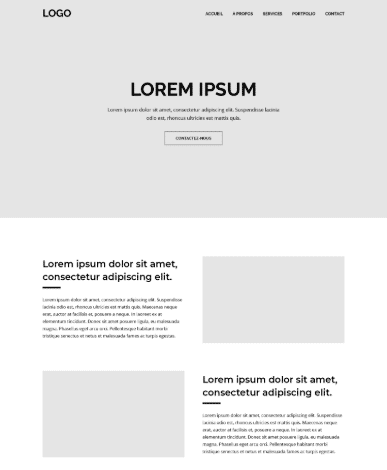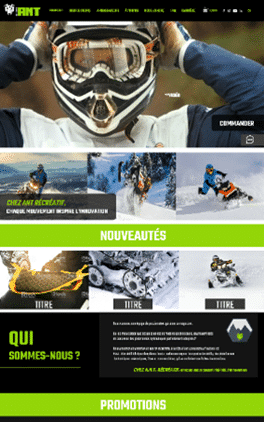There can be multiple ways to design a website, whether considering the design or programming aspect. First, in programming, websites can be classified into two major categories: custom websites (with personalized code) and those built on CMS (like WordPress).
Focusing on the design aspect (the front end – or what the user sees), numerous stages of reflection come into play.
Specify the requirements
When we start a project at PointPub Media, the first step is to define the type of website required by the client and the intended use for it.
- One pager (single-page site)?
- Showcase or transactional website?
- Will the client frequently need to make changes to the site?
- Does the client want to be self-sufficient?
- What is the long-term vision of the company, and therefore, the website?
- Who is the target audience for the site?
- What is the budget?
- Etc.
These questions are just a few of the ones we will ask you to determine your needs. The type of website will likely become evident. As all of this can become overwhelming, you can revisit our post “How to Compare Received Proposals for Your Website.”
Graphic Design Consideration
Once we have determined the type of website you need, we can begin the process of graphic design consideration! But first, a few definitions:
Programming: The development and coding of a program…
UX/UI Design: One doesn’t go without the other. In “plain English,” UX design stands for User Experience, and UI stands for User Interface. Here, we’re not talking about programming. One is purely thoughtful and strategic (UX), while the other is about effectively conveying objectives by making everything visually appealing (UI).
Before starting the creation of a visual, some significant steps are taken, including:
- Research
- Reflection on the site’s structure
- Schematization
- Research to satisfy the target audience
If the purpose of the website hasn’t been thought out beforehand, the result may end up having poorer content and providing a less appealing user experience.
UX and UI Design
So, UX (User Experience) allows you to optimize your website to be ergonomic and intuitive for users. UX is, in a way, essential. A good UX is well-thought-out and contributes to your marketing optimization and website traffic.
UI (User Interface), as you might have understood, pertains to aesthetics. The visual design. The direct interaction with the user… It’s everything that is perceived on a website: sight, “touch,” sound, and feeling. A good UI has an intuitive and easy-to-understand interface and leads to the desired result envisioned in UX.
A successful UI respects the company’s brand image, is ergonomic, and visually appealing. UI is used to effectively convey everything that was thought out in UX to properly communicate goals and messages. That’s why one doesn’t go without the other.


Final advice
Our advice for designing a website is to clearly define your needs, which also includes your budget. It’s evident that in-depth UX and UI design will require more time and expertise. More time and expertise naturally entail a higher budget. However, at PointPub Media, we always recommend both (UX/UI design) to their fullest capacity.
The ultimate goal is for your website to provide a positive experience for future users, to be effective, and to have a strong impact on your marketing!
Contact us to discuss your upcoming website or future redesign!
Take a look at some of our achievements!


